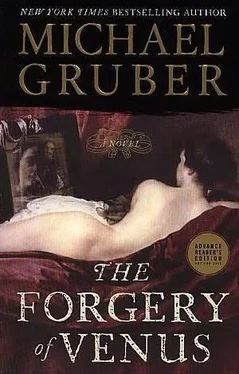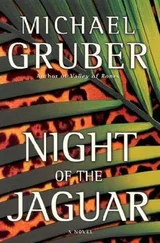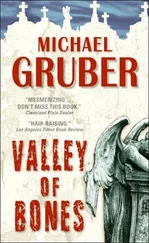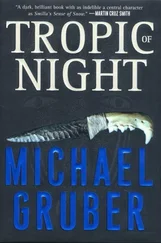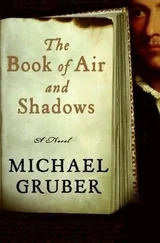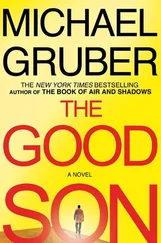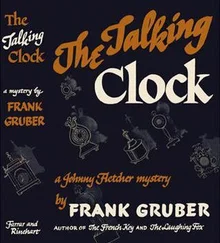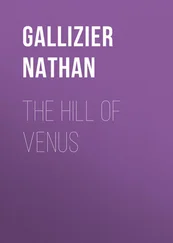“You are blocked.”
“I am blocked.” At that moment I almost spilled it: the whole horror of what had happened in New York, the fancy loft, the Enso Gallery, the loft door that wouldn’t open, the falsification of memory. Because of anyone I knew, Maurice Rothschild would have been the person most likely to understand it. But I didn’t. Why not, Chaz? Why didn’t you unburden yourself to this enormously charitable and knowledgeable man? Maybe there would have been a great vomiting out of the blockage then, he’d be my magician lifting the curse with a subtle word, but the truth is we love our dark stuff, we hug it to our inner hearts even as it corrodes our vitals. I confess it: just like with Slotsky, I was simply too fucking terrified to ask.
Instead I laughed a fake chuckle and said, “But what can I do? At least I’m making money.”
“Not to be sneezed at,” he said after a decent pause. “Let’s have some coffee and a little grappa and then we’ll go see your ceiling.”
Which we did in due course, and when he saw it, looking up with the spotting scope I use to check the paint from the ground, he laughed and said, “That’s marvelous! A little artistic joke. You have captured precisely my girl.”
“You think she’ll mind?”
“On the contrary, she’ll be delighted.”
“I thought she didn’t like artistic jokes.”
“That would depend on the joke and its context. Artistic jokes are amusing only against a serious background. Mozart wrote a musical joke, but Mozart is easily distinguishable from Spike Jones. This”-here he gestured upward-“is astounding. I see the paint is still fresh, but I would be hard-pressed not to call it the work of the master, and it’s not merely the composition, which of course you had from the cartoons, it’s the colors, that glorious shot-silk effect and the delicacy of the drawing in the details, that marvelous line he has. Or you have. It is a consummate forgery. In fact, I believe it is, all told, the very best artistic forgery I have ever seen. And I have seen a few.”
“Really? When?”
“Oh, it was something I did in my early career. I had the degree in art history, perfectly useless, I thought, for a diplomat-economics, political science far more the thing, and if history, one wants the history of rulers and their elaborate murders, wars and so forth-but someone in the ministry must have examined dossiers because I was picked to participate in the negotiations around returning artworks looted by the Third Reich. This was in, I believe, 1956. Of course, the great troves, the most famous works stolen by Göring and the big gangsters, had already been returned. But the scale of the looting was so vast…I mean, an enormous proportion of the cultured class in Germany and the conquered lands was despoiled, not to mention museums in places like the Netherlands and France and Poland. Not only the Jews, who of course lost everything, but liberals and socialists of every stripe. I mean to say, if you have a regime that is essentially lawless, anyone with a pretension to power can take anything he wants from anyone designated as an enemy of the state.”
“So what did you do?”
“Well, the apologetic powers established an office in Paris and there someone would come, let us say a French Jew who survived, and place a claim: I had a Cézanne, I had a Rubens, and the Germans came and they’re gone. And then the police, let us say, locate the Germans who were in this man’s area, and they look, and sure enough former Hauptführer-SS Schultz has a Cézanne stashed away in his attic, the Frenchman’s very Cézanne, or so it seems. But since this was an international body and very correct, it must make sure it is the same painting and that the Frenchman really owned it, and so forth, and for this they need an art-historical diplomat, and this is me. Now, Herr Schultz has done his time in prison, perhaps three years, because after all he only killed a hundred Jews instead of a hundred thousand, and he is participating in the German reconstruction and he wishes very much to hold on to the painting, which he intends to sell at some point to expand his business, and so he cleverly decides to hire some art student to copy it, and someone must be on hand to catch him at his tricks, and again this is me.”
“Gosh, I didn’t know any of this,” I said. “Did this happen a lot?”
“No, because as I’m sure you know, forgery is difficult and these people were no great connoisseurs in the main. The efforts to deceive were generally quite childish.” He smiled and jerked his thumb upward. “I’m grateful you were not in business at that time.”
And now something made me think of the conversation I’d had with Mark about art forgery, maybe the word “business” triggered some neuron too, and I asked him, “Did you ever hear of someone in the art business named Krebs?”
At the mention of this name the familiar genial expression vanished from his face, and for a moment I saw replacing it the mask of the diplomat he’d probably worn to work for thirty years.
“You are referring to Horst Axel Krebs?”
I said, “No, I think his name is Werner.”
“The son, then. Why do you ask?”
So I told him about Slotsky mentioning the connection between this fresco job and Krebs. He listened in silence and then said, “Let’s take a walk. I want to take a look at the San Zaccaria Bellini again.”
We left the palazzo and walked south on Corte Rotta in the chill rain that keeps the tourists scant in Venice’s winter between Christmas and Carnival and makes the uneven streets reflect, canal-like, the colored stonework of the great facades. As we walked, he said, “So-let me tell you about Herr Krebs. First the father, Horst Axel Krebs. Like me and Hitler, a failed artist. He was young enough to miss the first war, and after a bohemian youth in Munich, he set up as an art dealer there in 1923. In 1928 he joined the Nazi party, and after the Nazis took power he was made a curator at the Alte Pinakothek in the place of a removed Jew. By this time he is married and has a son, Werner Horst, born 1933. In 1940, the Nazis organized the Einsatz-stab Reichsleiter Rosenberg. Do you know what that was?”
“No, but I’m guessing it wasn’t devoted to increasing the sum total of human happiness.”
“You would be correct. It was the bureaucracy assigned to loot the collections of France and Western Europe of any artworks of interest to the new rulers, especially the collections of Jews. Our Krebs is assigned to the Paris office, the richest lode of all, and here he specializes in record keeping. He knows what has been looted from whom and where it is kept. So he goes on for four years, and then comes 1944, D-day. The Allies advance and the ERR pulls out of Paris with trainloads and truck convoys of artworks. Some of it was stopped by the French resistance, tons of it were found by the Allies, but a lot of it disappeared and remains lost to this day. In late 1945, Horst Axel Krebs was arrested by the British, tried at Nuremberg, and given a two-year sentence.”
“That seems fairly light,” I said.
“Yes, but at the time, as I suggested earlier, mass murderers were getting ten years or less, and he hadn’t actually killed anyone as far as they knew. Just a thief was Horst Axel. So by 1949 he’s back in Munich contributing to the economic miracle. He has a little gallery on the Kirchenstrasse where he sells harmless landscapes and flowers to burghers refurbishing their war-torn homes. Obviously he’s poison to the legitimate art market; he’s investigated up and down by the Allied occupation authorities, they have a whole dossier on him, but as far as anyone knows, he’s clean, just a businessman. Well, time goes on, the anti-Nazi fervor fades away, everyone is just a good German trying to get by and be a bulwark against communism, et cetera, and meanwhile little Werner is all grown up, with a diplom from the Ludwig-Maximilians University in art history and conservation. He now settles in Frankfurt to get a little distance from the father in Munich, and also because Frankfurt is where all the money is. He’s taking a hand in the family business, of course, but the real business, not the Kirchenstrasse gallery.”
Читать дальше
